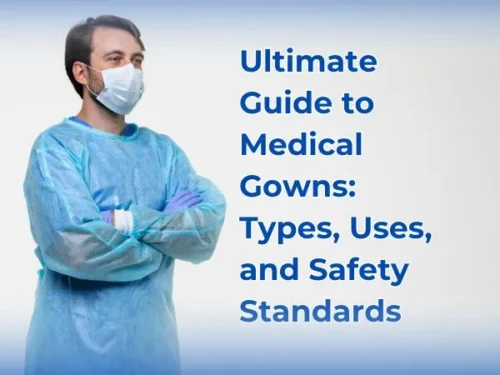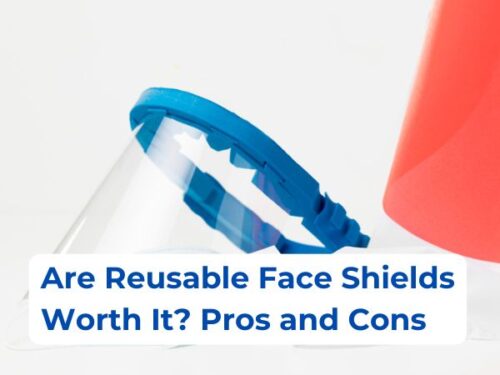As per the statistics reported by the Johns Hopkins Hospital, approximately 4.5% of the children i.e. nearly 3.34 million kids residing in the US are suffering from hypertension. Unlike adult patients, the requirements for the BP machines employed for children are more critical. For these patients, the development and use of pediatric blood pressure monitors is essential.
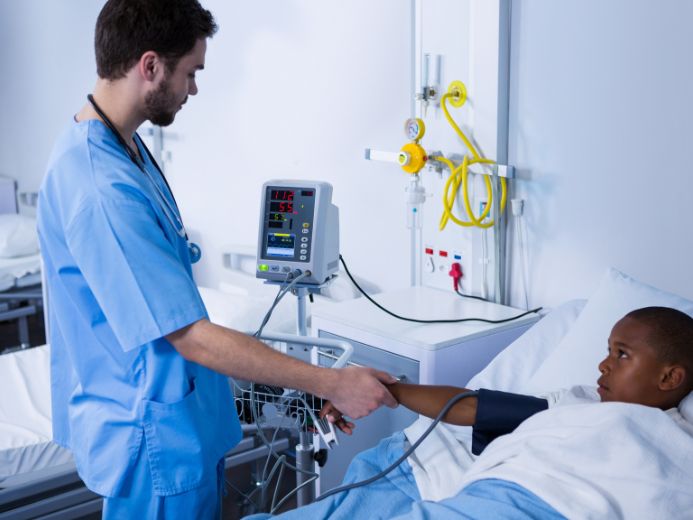
Let us dive into more detail regarding the nature of pediatric hypertension, its diagnosis, and management, as well as the pediatric blood pressure monitors that can be used to measure blood pressure in children.
Pediatric Hypertension
High blood pressure in pediatrics is a condition when a child’s blood pressure value is higher than normal after repeated measurements with pediatric blood pressure monitors. In children, blood pressure varies even when the child is asleep. Therefore, a single measurement should not be used to diagnose hypertension. In addition, the normal blood pressure value also tends to vary depending on the age, height, and gender of the kids.
Normal Blood Pressure Readings in Children
The following table enlists the normal blood values in children based on their age:
| Age | Boys | Girls | ||
| Systolic | Diastolic | Systolic | Diastolic | |
| 1 | 98 | 52 | 98 | 54 |
| 2 | 100 | 55 | 101 | 58 |
| 3 | 101 | 58 | 102 | 60 |
| 4 | 102 | 60 | 103 | 62 |
| 5 | 103 | 63 | 104 | 64 |
| 6 | 105 | 66 | 105 | 67 |
| 7 | 106 | 68 | 106 | 68 |
| 8 | 107 | 69 | 107 | 69 |
| 9 | 107 | 70 | 108 | 71 |
| 10 | 108 | 72 | 109 | 72 |
| 11 | 110 | 74 | 111 | 74 |
| 12 | 113 | 75 | 114 | 75 |
| ≥13 | 120 | 80 | 120 | 80 |
High Blood Pressure Readings in Children
A child is considered hypertensive if the average blood pressure value taken with pediatric blood pressure monitors after repeated measurements at different periods is above the 95th percentile of gender, age, and height. Although the exact reason behind the higher number of hypertension cases in pediatrics is unknown, it is hypothesized that this high blood pressure is linked to obesity in children. The following table shows the categories of hypertension in children along with the expected values:
| Category | For Children Aged 1 to <13 Years | For Children Aged ≥13 Years |
| Normal BP | <90th percentile | <120/80 mmHg |
| Elevated BP | 120/80 mmHg to <95th percentile | 120/<80 to 129/<80 mmHg |
| Stage 1 HTN | 130/80 to 139/89 mmHg | 130/80 to 139/89 mmHg |
| Stage 2 HTN | ≥140/90 mmHg | ≥140/90 mmHg |
Diagnosis of Pediatric Hypertension
The diagnosis of hypertension in a child patient can be made in the following way:
● Physical Examination
While doing a physical examination, the physician takes your child’s medical history. It is also important to calculate their body mass index to find out if the child is obese. If your child takes any medications such as over-the-counter decongestants or corticosteroids, these might be the reason for their elevated blood pressure. Moreover, consumption of caffeinated drinks can also lead to a temporary increase in blood pressure. Finally, it is also checked if she or he has a family history of hypertension.
● Laboratory Evaluation
The following tests can also be prescribed by physicians to find out the root cause of pediatric hypertension:
● Hemoglobin levels
● Renal function test (RFTs)
● Serum lipid concentration
● Blood glucose levels (BGL)
● Urinalysis
● Chest X-ray
● Spot protein to creatinine ratio
● ALT/AST
● TSH levels
● Drug screen
● Sleep study
● Echocardiography
● Renal ultrasonography
● CT-MR angiography
● Measurement of Blood Pressure
For the measurement of the child’s blood pressure, a suitable-sized blood pressure cuff should be employed. It needs to be applied to the right arm. The devices which can be used for this purpose include the following:
– Oscillometric Devices
Oscillametric devices offer a user-friendly method for the estimation of blood pressure. These are automatic systems that work by measuring the oscillations which are transmitted from the arterial flow. These blood pressure systems are ideal for preschool kids as well as for non-cooperative pediatric patients.
– Ambulatory Blood Pressure Monitors (ABPM)
An ambulatory blood pressure monitor is suitable for use outside a healthcare setup. These systems take multiple readings over a period and calculate their mean. The ABPM systems are considered more accurate than the devices which are employed in clinical settings.
– Auscultatory Mercury Sphygmomanometers
The auscultatory mercury sphygmomanometer is the most reliable instrument for the measurement of blood pressure in pediatric patients. For this purpose, the child is asked to be seated calmly. After 5 minutes, the cuff is applied on the upper arm and a stethoscope is placed on the brachial artery. Using a mercury sphygmomanometer, the Korotkoff sounds are heard which tells the systolic and diastolic blood pressure.
● Blood Pressure Cuff Size for Pediatric Patients
According to the American Heart Association (AHA) as well as the National High Blood Pressure Education Program (NHBPEP), the child cuff size employed for pediatric patients should be standardized to the circumference of the arm. Therefore, the following table should be referred to before making a purchase:
| Cuff | Arm circumference (cm) | Bladder width (cm) | Bladder length (cm) |
| Newborn | Less than 6 | 3 | 6 |
| Infant | 6 to 15 | 5 | 15 |
| Child | 16 to 21 | 8 | 21 |
| Small adult | 22 to 26 | 10 | 24 |
| Adult | 27 to 34 | 13 | 30 |
| Large adult | 35 to 44 | 16 | 38 |
| Adult thigh | 45 to 52 | 20 | 42 |

Management of Pediatric Hypertension
For the management of high blood pressure in children, there is a need to change their lifestyle. The measures to be taken in this regard are as follows:
● In the case of obese children, it is important to work on their weight loss using healthier means. Kids should be encouraged to play outdoors every day to burn some calories. The ideal exercise duration is considered 60 minutes.
● The dietary habits of your child should also be modified. Junk food should be minimized and healthy low-fat alternatives should be incorporated into their diet.
● Foods with high salt concentrations should be avoided. Consumption of sodium should be restricted to 1,500 mg per day.
● Sugary food items should not be consumed. Sweet drinks such as juices, sodas, etc. should be eliminated from the child’s diet.
● Sedentary activities such as watching TV or using a computer should be minimized.
If, even after 6 months of dietary and lifestyle changes, the child’s hypertension does not go away, there may be a need for medications that can be prescribed by a healthcare provider.
What to Look For in a Pediatric BP Monitor?
The following features should be considered before buying a blood pressure monitor for pediatric patients:
● The monitor should be validated for pediatric patients.
● The cuff size should be suitable for children.
● The product should be comfortable to use.
● BP monitoring device should be able to take an average of multiple readings.
Pediatric Blood Pressure Monitors and Accessories: Brands and Specifications
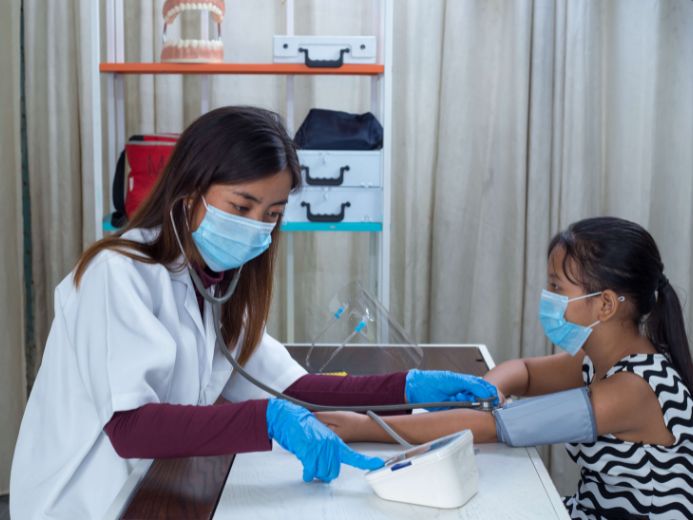
When it comes to measuring blood pressure, several monitoring systems are available in the market. Some of these are more accurate than the rest while others are easy to use. For pediatric patients, the following pediatric blood pressure monitors as well as the relevant accessories can be employed:
BP785 Omron 10 Series Upper Arm Blood Pressure Monitor
BP785 Omron 10 series is an advanced upper arm blood pressure monitoring device with a push-button start display system. The screen is also back-lit which enables the user to visualize the readings without any difficulty. Moreover, the extra-large digits feature renders the visualization of the readings easy for the users. In addition to the usual analysis of blood pressure, the Omron 10 series is also capable of detection and measurement of irregular heartbeats.
BP760N Omron 7 Series Wireless Upper Arm Blood Pressure Monitor
Omron BP760N 7 series upper arm blood pressure monitor is an accurate and reliable wireless system that connects with the smartphone via Bluetooth to keep track of blood pressure readings. The display system is large and easy to read for the users. The backlit technology also makes the visualization quick with great clarification.
In addition, its irregular heartbeat detector alerts the patient when the need arises. Moreover, the Easy-Wrap Comfit cuffs come with a circumference of 9 to 17 inches. Two users can measure and store their blood pressure readings simultaneously in the device storage which has a capacity of saving up to 60 values.
BP6350 Omron 7 Series Blood Pressure Monitor
BP6350 7 series Omron blood pressure monitor is a clinically validated system that is lightweight and portable which makes it easy to carry the system while traveling. The device can either store up to 90 blood pressure readings or unlimited values when linked to the Omron Connect app. An irregular heartbeat detector as well as a cuff wrap guide also comes with the device. The product is suitable for adult as well as pediatric patients.
BP652 Omron 7 Series Wrist Blood Pressure Monitor
BP652 Omron 7 series wrist blood pressure monitor has an automatic inflation system that inflates the wrist cuff up to its appropriate level while taking a person’s blood pressure readings. Like its other versions, this Omron 7 series also has an irregular heartbeat alert system as well as an easy-to-read display system. In addition, the device also has a body movement detection system that alerts the user if their movements are significant enough to cause reading inaccuracy.
The blood pressure readings storage capacity is up to 100 values for a single user. Furthermore, the values of pulse rate, systolic blood pressure, and diastolic blood pressure are also displayed on the smartphone where the free Omron Connect app is installed.
BP-629 Omron 3 Series Wrist Automatic Digital Blood Pressure Monitor
BP-629 Omron 3 series blood pressure monitor is an automatic device with a one-touch operation. In addition to the above-discussed features, the IntelliSense technology of the device enables the wrist cuff to inflate easily for an accurate measurement of blood pressure reading.
At a time, a single user can employ the device and store up to 60 readings. The display system is easy to read and comprehend which makes it suitable for the elderly as well as patients with poor vision.
Welch Allyn DS58 Platinum Series Hand Aneroid Set DS58-11
Welch Allyn DS58 platinum series hand aneroid set includes a high-quality sphygmomanometer with a blood pressure cuff. The parts of the set are packed within a strong case which prevents them from getting damaged. The product comes in black and has a dual display. The dial is also laser-engraved. Its lighter weight makes it portable and the inflation system is based on the ergonomic system. The Welch Allyn aneroid system can be used in adult and child patients.
FlexiPort Blood Pressure Cuff Small Size
FlexiPort blood pressure cuffs are reusable cuffs. These are easy-to-use, long-lasting, and reusable cuffs that are affordable and cost-effective. These cuffs are simple to connect to the blood pressure device through a single-point FlexiPort snap connection.
The FlexiPort cuff sizes have three options i.e. extra-small cuff is between 5.9″ to 9.4″, the standard one ranges from 8.75″ to 16.5″ while the extra-large one has a size range of 15.7″ to 21.2″.
Their suitability is for patients belonging to all age groups including infants as well as adults. Moreover, to avoid cross-contamination, the FlexiPort cuffs also offer a disposable option.
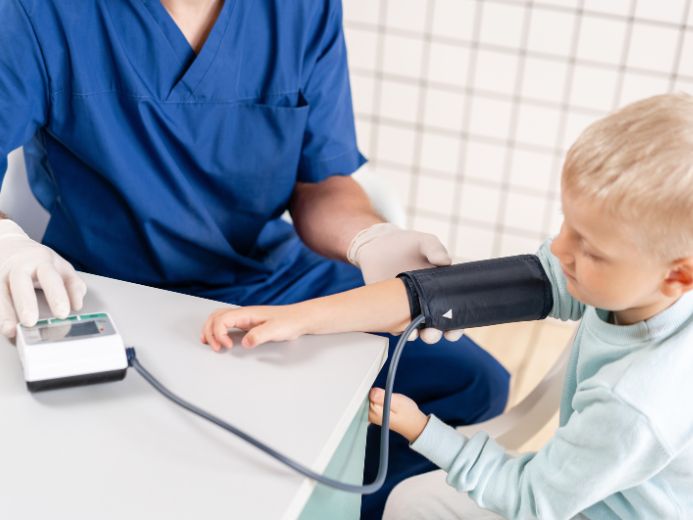
The pediatric blood pressure monitors mentioned in this article, along with many other medical supplies, can be purchased from Health Supply 770, a reliable name when it comes to medical products. They have a 30-day money-back guarantee and provide your products to you in the shortest possible time. Click the link at the end of the article to check the wide range of blood pressure measuring devices on the website.
Conclusion
Pediatric blood pressure monitors are as essential as adult ones because of the increasing prevalence of hypertension in children. With proper diagnosis, necessary lifestyle changes, and the use of medications, high blood pressure in kids can not only be controlled but also completely reversed.
Some of the brands of pediatric blood pressure monitors available in the US market are suitable for home use while others are specifically for employment in a healthcare facility. However, all of these are up to the mark in their performance. What varies is their ease of usage and user-friendly system.
To purchase blood pressure monitors, reliable vendors like Health Supply 770 should be approached who ensure the provision of quality products along with satisfactory services. They also offer quick shipping to other countries.
Click to Order from Health Supply 770
References
https://www.bcm.edu/bodycomplab/BPappZjs/BPvAgeAPPz.html
https://www.ncbi.nlm.nih.gov/pmc/articles/PMC7706222

PhD Scholar (Pharmaceutics), MPhil (Pharmaceutics), Pharm D, B. Sc.
Uzma Zafar is a dedicated and highly motivated pharmaceutical professional currently pursuing her PhD in Pharmaceutics at the Punjab University College of Pharmacy, University of the Punjab. With a comprehensive academic and research background, Uzma has consistently excelled in her studies, securing first division throughout her educational journey.
Uzma’s passion for the pharmaceutical field is evident from her active engagement during her Doctor of Pharmacy (Pharm.D) program, where she not only mastered industrial techniques and clinical case studies but also delved into marketing strategies and management skills.












